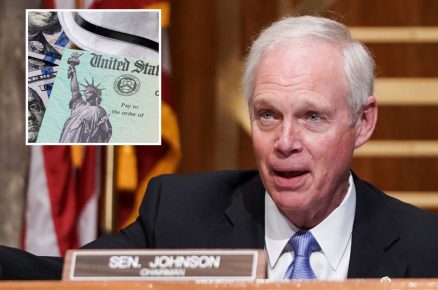Blessed are the young, Herbert Hoover stated, for they shall acquire the nationwide debt.
Hoover’s observation has brand-new significance 88 years after Donald Trump’s ignominious exit from the White Home. Not just due to the fact that the U.S. just had a brush with the 1930s Depression that his failings helped make “fantastic.” However, because kids who have not been born yet will be paying off the Covid-19 era financial obligation growing before our eyes.
This isn’t an ethical or ideological observation. Actually, what else are governments to do however deficit invest as development collapses and joblessness surges? Yet here in Asia, it deserves wondering how the tradition of all this debt impacts public spending on education, health, infrastructure, and policies targeted at increasing innovation and productivity.
The numbers are currently mind-numbing. From what governments confess globally, pandemic rescue moves included about $ 24 trillion to the global financial obligation mountain in 2020, pushing IOUs to a record $281 trillion.
It sure does make you question if, say, Covid-19 versions outsmart vaccines, the international economy will be too huge to stop working or too huge to save. Or in establishing Asia’s case, too huge to avoid underfunding financial investments in future generations to avoid the “middle-income trap” and social unrest.
In a new report, the International Institute of Finance highlights Asia’s role in this borrowing binge among emerging economies. In general, IIF notes, establishing nation debt-to-gross-domestic-product ratios topped 250% in 2020, up from 220% in 2019.
In emerging Asia, debt-to-GDP tops 298%, up from 266% in late 2019. China, South Korea, and Thailand discover themselves with the suspicious honor of remaining in the top 5 economies with the most significant year-on-year boosts. Here, India should have attention, too, reporting a 17.3% dive in its federal government debt ratio.
Usually, however, Asia saw a lot of the biggest debt-ratio dives amongst emerging economies across government, non-financial business, and household sectors year-over-year in the last three months of 2020.
There are numerous ways all this loaning complicates Asia’s future.
One is increased vulnerability to a repeat of the 1997-1998 crisis, which had its roots in excessive loaning. Another: as debt-servicing expenses surge, there is less cash to spend on economic hardware– roadways, airports, power grids– and financial software– education, training, public health– that will harm competitiveness in the long run. Finally, crowding out the private sector’s capability to finance new growth opportunities.
IIF financial expert Emre Tiftik stresses over “corporate zombification.” As international healing collects pace, he notes, “governments will be establishing exit methods from remarkable financial assistance measures.”
To date, government warranties and moratoriums on debt payments effectively prevented a rise in organization bankruptcies. The decline in the number of companies declaring insolvency across numerous European countries has been extraordinary.
Yet, Tiftik alerts, “premature withdrawal of supportive government steps could mean a surge in personal bankruptcies and a new age of non-performing loans, with financial stability ramifications for the banking sector. Nevertheless, continual dependence on federal government support could position systemic threats to the monetary system also. An extended period of loan assurances– combined with sustained low-interest rates– could well encourage still more financial obligation build-up by the weakest and most indebted corporates.”
Here, Japan’s experience these last 30 years deserves the following. Tokyo shows that even in pre-coronavirus times, it can appear impossible to unwind hyper-aggressive public loaning and ultralow rates of interest. Remarkable stimulus efforts tend to end up being stabilized rather rapidly. Banks, companies, customers, and politicians get utilized to free money.
That can institutionalize complacency. As economist Lee Jong-Wha at Korea University mentions, declining growth raises financial sustainability difficulties. Amongst both emerging and middle-income Asian economies, he notes, the International Monetary Fund expects fiscal positions to continue degrading The Asian Advancement Bank, too, says this trajectory will be tough to reverse in time.
“At the same time, Lee says, “increased liquidity is stimulating danger cravings, causing property rates to rise quickly. Already, some East Asian nations, consisting of South Korea and China, are struggling to constrain real-estate bubbles in major cities, despite tighter mortgage guidelines. And some experts have warned that a stock-market correction is imminent, though others argue that low real interest rates and the technology sector’s development potential validate today’s high equity prices.”
In that context, Lee adds, “expectations of fiscal- and monetary-policy normalization following the resurgence of development and inflation might cause global stock prices to plummet. And a massive liquidity withdrawal from emerging-market economies might spell catastrophe for those Asian economies that are extremely exposed to short-term inflows of foreign capital.”
Approved, it’s barely an easy obstacle. The last eight-plus decades since the Great Anxiety taught policymakers that you don’t tighten up financial policy, Hoover-style, amidst weak growth. Yet it’s also important to plot an escape of unsustainable stimulus and how and when to execute it.
“The most crucial obstacle is to find a properly designed exit method from these remarkable fiscal measures,” Tiftik says.
That’s easier said than done. Striking the brakes prematurely risks holding up living requirements across Asia, especially as governments wind back Covid-era safeguard. Wait too long and leaders throughout this region will bestow to their grandkids the costs for 2020. And a future in which this week’s spike in international yields is an all-too-common danger.









